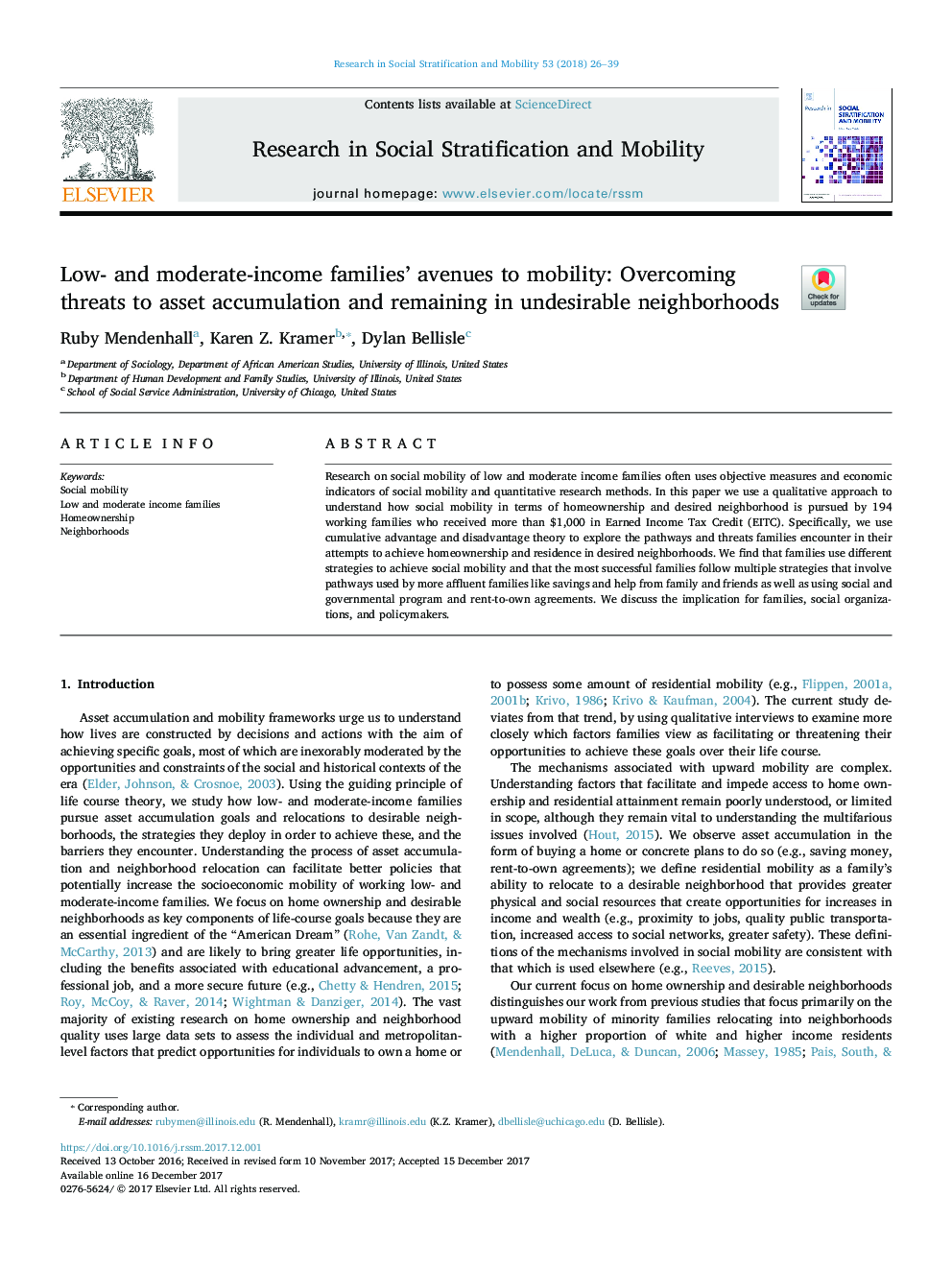| Article ID | Journal | Published Year | Pages | File Type |
|---|---|---|---|---|
| 7409925 | Research in Social Stratification and Mobility | 2018 | 14 Pages |
Abstract
Research on social mobility of low and moderate income families often uses objective measures and economic indicators of social mobility and quantitative research methods. In this paper we use a qualitative approach to understand how social mobility in terms of homeownership and desired neighborhood is pursued by 194 working families who received more than $1,000 in Earned Income Tax Credit (EITC). Specifically, we use cumulative advantage and disadvantage theory to explore the pathways and threats families encounter in their attempts to achieve homeownership and residence in desired neighborhoods. We find that families use different strategies to achieve social mobility and that the most successful families follow multiple strategies that involve pathways used by more affluent families like savings and help from family and friends as well as using social and governmental program and rent-to-own agreements. We discuss the implication for families, social organizations, and policymakers.
Related Topics
Social Sciences and Humanities
Economics, Econometrics and Finance
Economics, Econometrics and Finance (General)
Authors
Ruby Mendenhall, Karen Z. Kramer, Dylan Bellisle,
